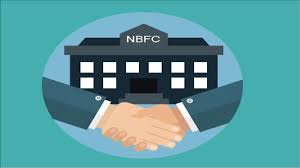
The World Bank estimates the current credit gap for MSMEs in India to be at a whopping $380 billion. The gap, a result of challenges both on the demand and supply side, has created opportunities for different models of fintechs and NBFCs to come into the market and address this gap.
Alok Mittal, CEO, Indifi Technologies felt that the Indian market is uniquely positioned to bridge this gap. On the demand side, the rapid growth of a large online ecosystem is providing the first degree of formalization for many of these MSMEs. Unlike in the past, formalization doesn't mean filing tax returns, but being able to accept electronic payments. And that footprint is something which can be used effectively to address the demand both from a data standpoint and an access standpoint.
The second key piece of this is infrastructure, where India has made the most effective investments compared to any other country. “For private players, this massive investment in public infrastructure has brought down the cost to serve. Also, unlike many of the Western geographies, the digital lenders and fintechs are not in a competition against the banks, but are starting with a collaborative position that allows us to marry the best capabilities of banks like capital, risk management, with ith the best capabilities as fintechs,” said Mittal.
The problem of MSMEs facing issues in access to finance has been perennial. Putting it in context, Aggarwal says that going back in time would make one see that only certain types of institutions were providing finance to MSMEs. “In the last decade, NBFCs and microfinance institutions played a key rol And then we saw the emergence of fintechs and finally the digital ecosystem, which is still evolving nicely,” he explained.Industry experts felt that as compared to international markets, MSMEs in India, due to the lack of access, relied more on informal sources of credit. Akash Gehani CEO, co-founder, Instamojo said that the last few years have seen the rise of various data platforms, digital commerce, NBFCs and other institutional small finance banks. “I think even in this space there is a lot of development for other countries and India might leapfrog some of that and get more digital data systems. We have alread ..
The significant aspect here is that MSMEs need the perfect convergence of accessibility, affordability and availability for a credit uptick. However, in most cases such aspects are missing when you look at the institutional commercial bank and NBFCs. So how can this issue be addressed
Aggarwal gave the example of a transport system that includes railway, large trucks, and small trucks to illustrate his point. “Each has their specific roles to play, banks are like railways which have depositors, raise funds and create the finance that is available for the NBFCs and fintechs. The NBFCs move one step further, playing the role of large trucks for a long period and they are still playing an important role. And fintechs are like the small trucks reaching the niche pockets and smalltrucks reaching niche pockets and small underserved markets where banks or NBFCs cannot reach. So, all three of them are playing a phenomenal role to coexist and collaborate and help the borrowers,” he stated.
For accessibility, he added that it has always been a problem since most of the small businesses do not have access to NBFCs and going to a bank is out of the question because they have multiple agendas to look at. “When they start applying to some NBFCs and get approvals, the cost plays a spoilsport. Less than 20% of applications actually get approved. Out of those, less than two or three actually get dispersed because of the time it takes, the terms and interest rates are prohibitive for many of the SMES are my relevamt audience and build